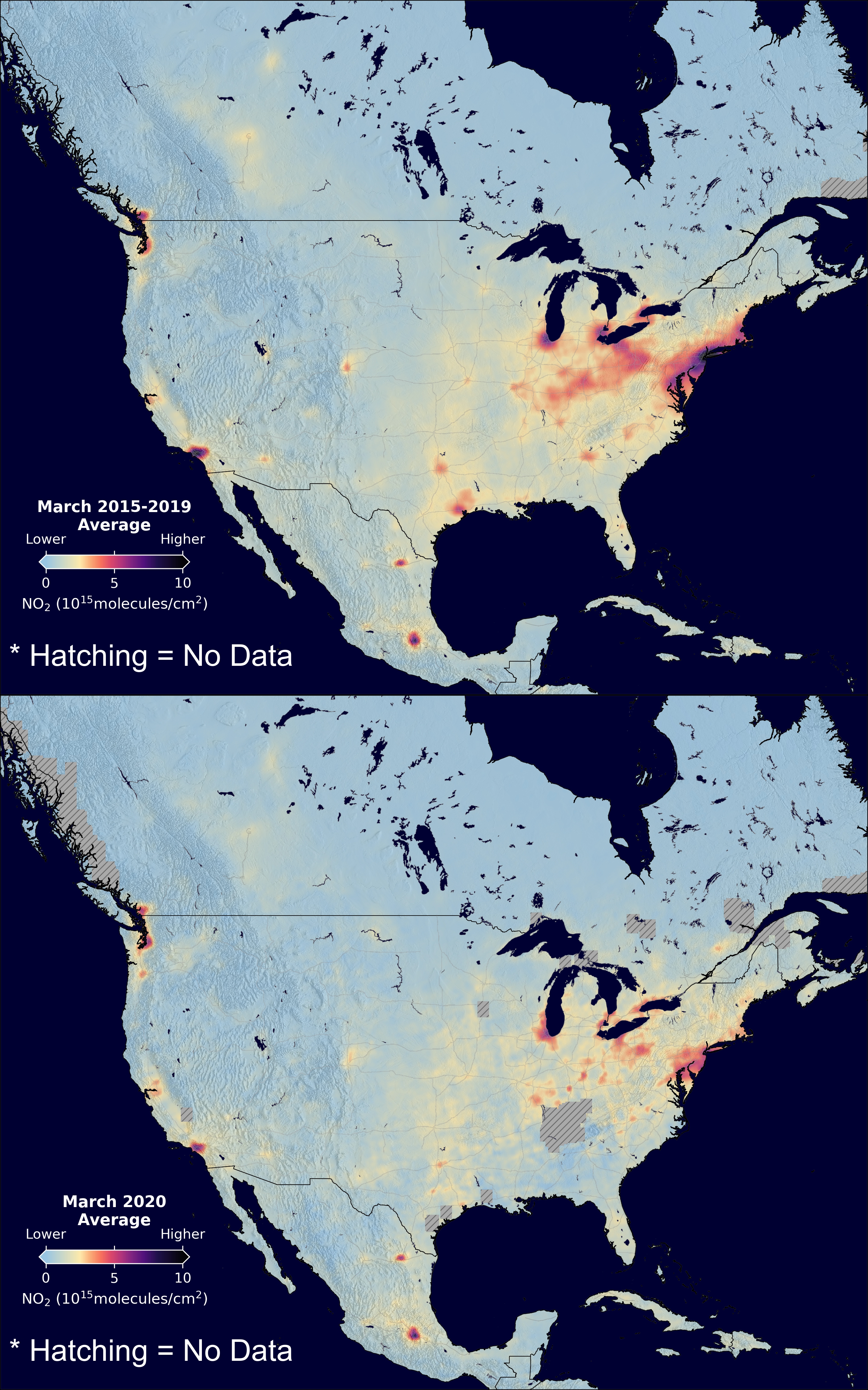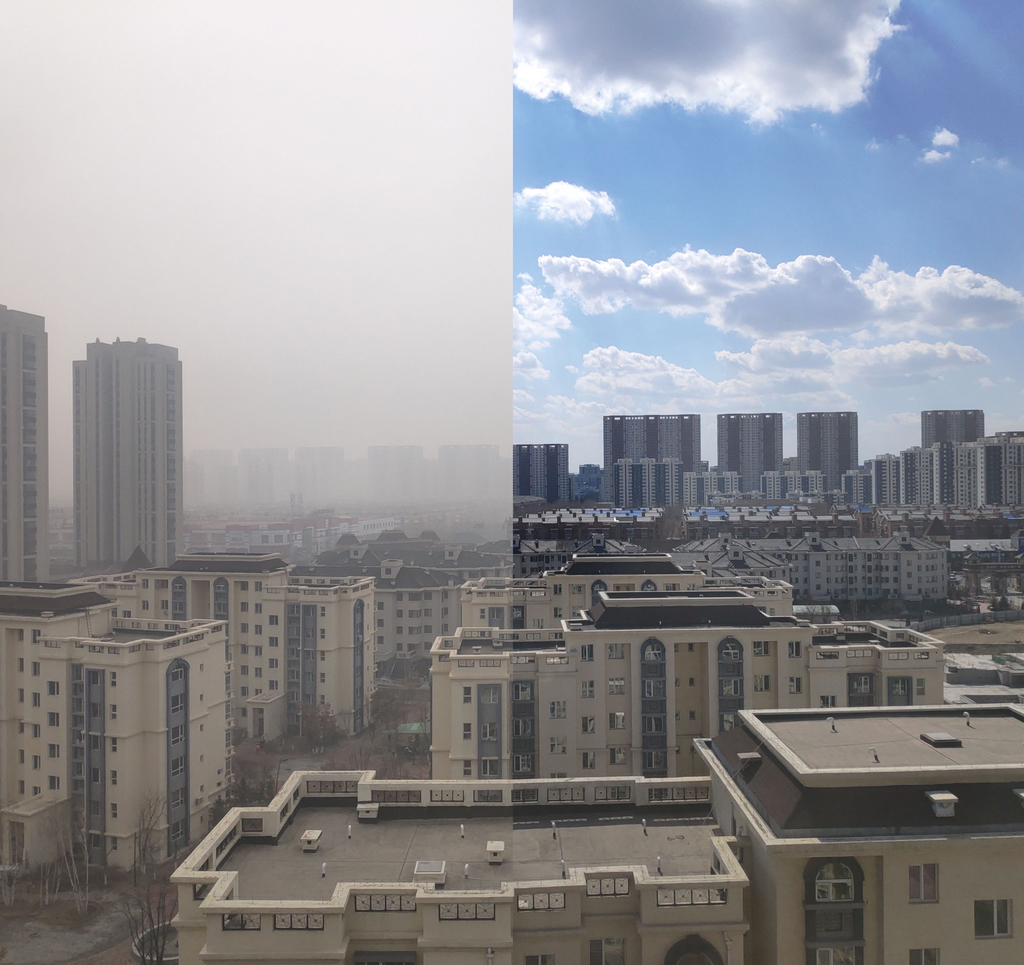News
New Space Instrument Technology Promises Unmatched Ability to Track Pollutants

Credit: NASA/Goddard Space Flight Center
While the COVID-19 pandemic has brought harm to tens of millions across the globe, it has also had a remediating effect on our atmosphere: Air pollution emissions have dropped, sometimes dramatically, if only temporarily. NASA and the European Space Agency reported nitrogen dioxide levels dropped by 30–50% across Europe and the United States, and by 40–50% in India, a country with half of the world’s 50 most polluted cities, according to IQAir AirVisual’s 2019 World Air Quality Report.
Now, as many countries reopen, nitrogen dioxide levels will likely rise again, and scientists from the Johns Hopkins Applied Physics Laboratory (APL) in Laurel, Maryland, along with team members at NASA’s Goddard Space Flight Center and international partner organizations, are working on the prototype of an instrument that could isolate the pollution emissions contributing to the output.
In January, the team received three years of funding through NASA’s Earth Science Division to develop a prototype of this proposed Compact Hyperspectral Air Pollution Sensor, or CHAPS, adding to the list of more than 150 instruments APL has built.
The device will be small enough to fit onto a satellite the size of a shoebox but powerful enough that it can view sources of air pollution at about half-a-square-mile (1-square-kilometer) resolution from low Earth orbit — an unparalleled capability that has been of interest to the scientific community.
“You could look at the transport and evolution of pollution,” said Bill Swartz, an atmospheric chemist at APL and the project lead. “But most importantly, you can isolate sources of pollution anywhere in the world with a single observation, a capability that’s virtually impossible to do today.”
The finest spatial resolution that current or planned spacecraft can achieve is around 4.3 square miles (11.3 square kilometers), a feat expected by NASA’s Tropospheric Emissions: Monitoring of Pollution (TEMPO) satellite that will launch in 2022. That resolution, although good, can’t separate individual sources in densely populated regions, such as cities, without statistical processing after the data has been collected.
CHAPS will circumvent that issue, and not just for nitrogen dioxide. By using hyperspectral imaging, CHAPS can see hundreds of wavelengths of light, including ultraviolet, visible and ultimately infrared, making it valuable for studies in other scientific fields, such as public health, volcanology and marine and terrestrial ecosystem monitoring.
Swartz also envisions CHAPS operating in coordinated satellite constellations, each with a CHAPS instrument that has been optimized to monitor another pollutant, such as methane, carbon monoxide or aerosols.
The key to CHAPS’s unprecedented capability, Swartz said, will be its use of freeform optics, an emerging field in which glass or mirrors are sculpted into an assortment of shapes — a banana, a saddle, even the rippled surface of water — that can focus light in ways that traditional optical shapes cannot.
Freeform optics allows for a very compact design without compromising optical performance, while reducing the size of optical elements and, in turn, the instrument’s total mass and volume.
In this first year, Swartz and the team are focused on designing and fabricating the electronics and freeform optics — potentially even using the new method of 3D printing the optical hardware — for their demonstrator, called CHAPS-D. After design and ground tests, the prototype will go through a series of aircraft flights in 2022 to validate its performance.
“Our recent, unanticipated global experiment — the COVID-19 pandemic — has drawn attention to the influence we have on the atmosphere, as well as an increasing appreciation for the impact of air quality on human susceptibility to respiratory illnesses,” Swartz said. “It’s exciting to have the opportunity to develop technologies that could advance the measurement and understanding of atmospheric composition in the future.”
